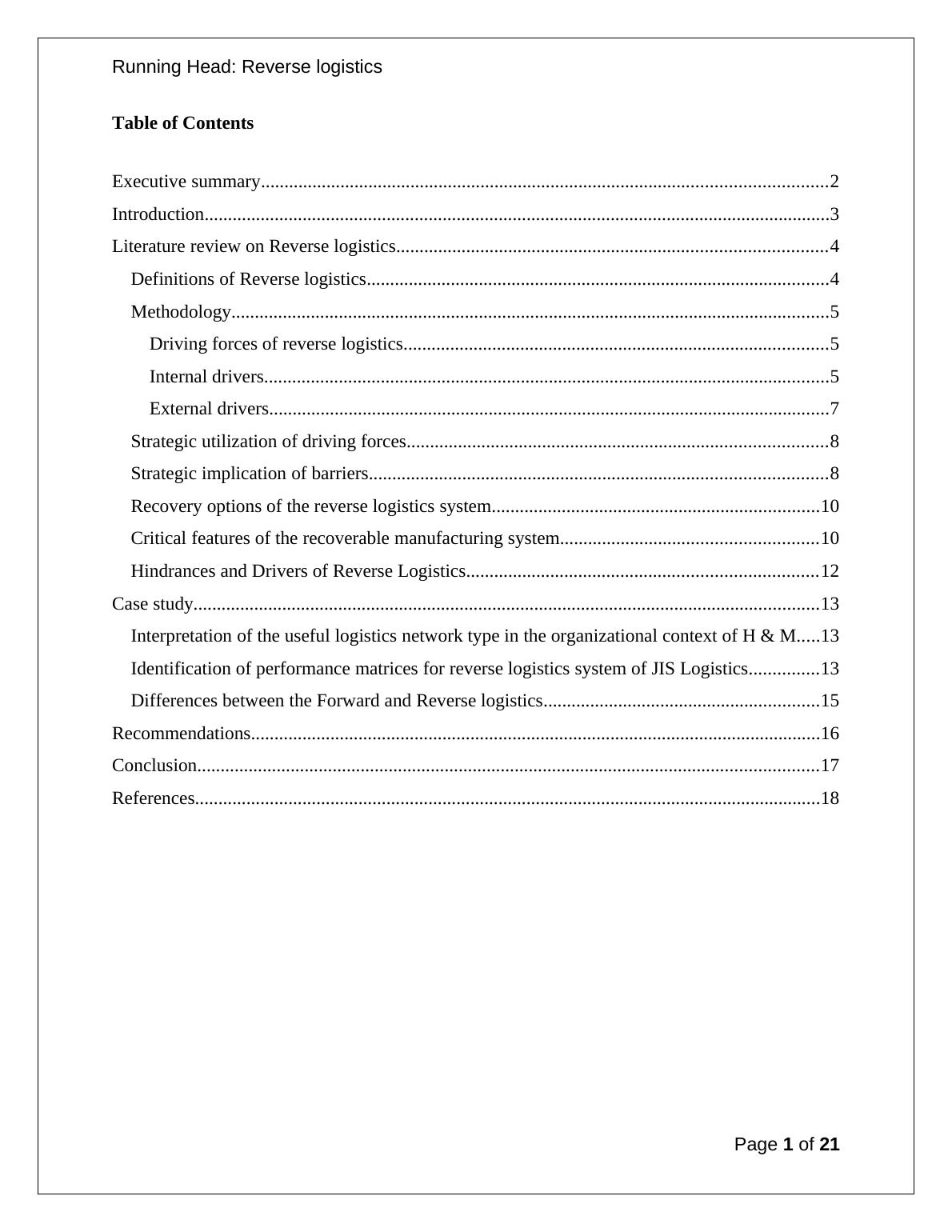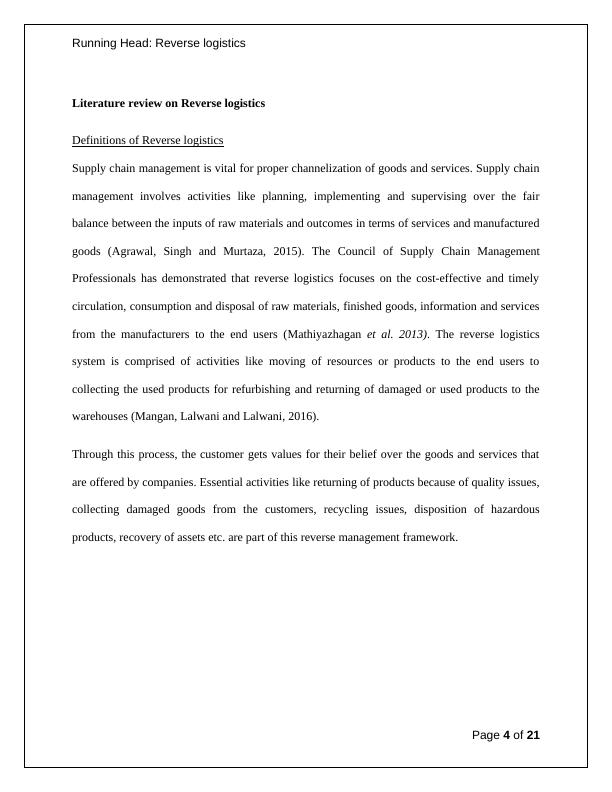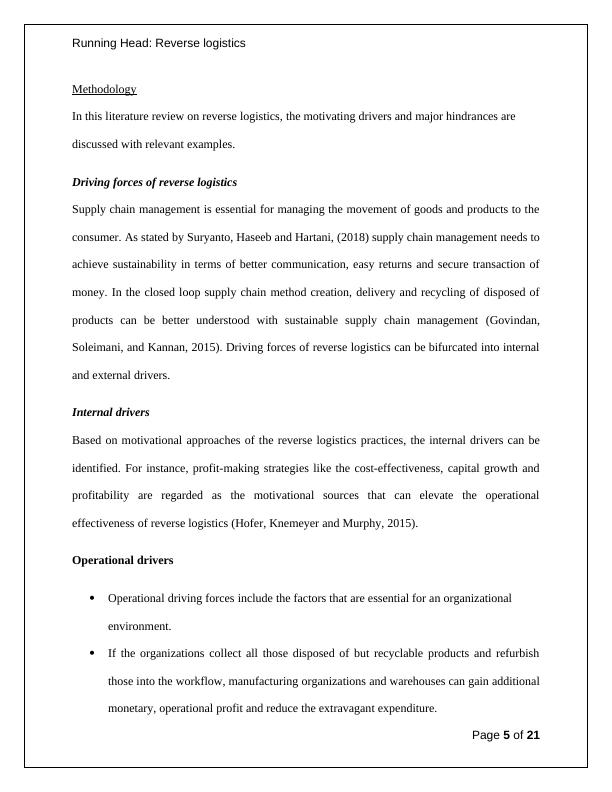Reverse Logistics: Literature Review, Driving Forces, and Recovery Options
Evaluate the importance of recovery options and key success factors of reverse logistics in an international distribution operation
21 Pages4044 Words1 Views
Added on 2023-01-18
About This Document
This report presents a literature review on reverse logistics, focusing on H&M in the global logistics market. It discusses the driving forces, recovery options, and hindrances of reverse logistics. The report aims to improve the effectiveness of reverse management for H&M and enhance customer satisfaction, capital growth, profitability, cost-effectiveness, innovativeness, and competitive advantage.
Reverse Logistics: Literature Review, Driving Forces, and Recovery Options
Evaluate the importance of recovery options and key success factors of reverse logistics in an international distribution operation
Added on 2023-01-18
ShareRelated Documents
End of preview
Want to access all the pages? Upload your documents or become a member.
Supply Chain Management and Logistic Strategies
|15
|4802
|58
Distribution and Logistics Network Design for Sustainability
|20
|4615
|412
Sustainable Management and Marketing
|12
|2523
|439
Logistics and Supply Chain Management for Apple, UK
|7
|1552
|110
MGB0019 - Logistics and Supply Chain Management Assignment
|17
|3506
|37
References for Operational and Services Management of Tesco
|2
|796
|81






